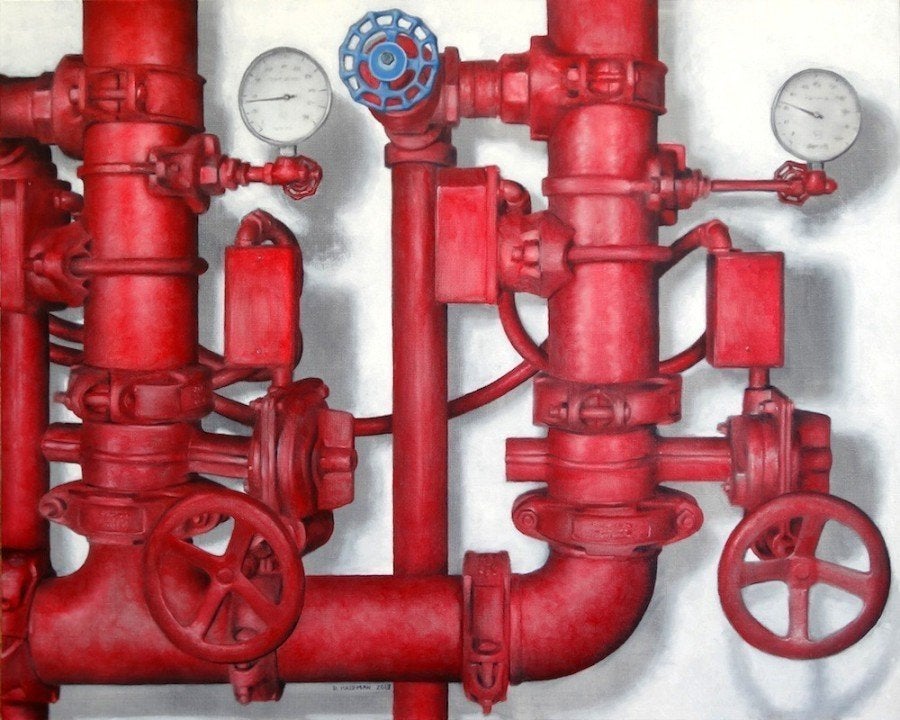The British Association of Art Therapists defines art therapy as "a form of psychotherapy that uses art media as its primary mode of communication." There are no limits on who can participate and no constrictions on what artistic supplies can be incorporated. The field, available to children and adults of all backgrounds and circumstances, opens up avenues of communication that extend beyond verbal language, exploring feelings that cannot be spoken.
Over the past few months, we've published a series of articles suggesting relaxation techniques -- inspired by the field of art therapy -- meant to help readers unwind, heal and express these unspoken feelings. We are not art therapists, and although the various artistic methods are based on therapy methods, art therapy can really only be defined as such when enacted in the presence of a certified art therapist. So, we reached out to one.
Specifically, we spoke to Dr. Sarah Deaver, the President of the American Art Therapy Association. We were curious to learn about the relatively young therapeutic field, one which remains somewhat unfamiliar to outsiders despite its recent rapid growth.
To the readers who responded to our previous posts, we're listening. We are shifting gears and exploring the world art of therapy through the lenses of certified professionals who do the job day in, day out. Today we are starting with the basics -- namely, What is art therapy? After laying the foundation, we will survey a range of individuals working in various distinct branches of the field, providing vivid stories of the still unfolding field. Read on to learn the basics, in theory and in practice, of the beautiful profession where art and psychology intersect.

How would you define art therapy to someone who knows nothing about the field?
Art therapy is a mental health profession in which an art therapist facilitates the client's use of art media and the creative process to reach a number of treatment goals or personal goals such as exploring feelings, reconciling conflicts, improving self awareness, behavior management, social skills.
How did you get involved with the field?
I've been an art therapist for over 30 years. When I was first starting out I didn't realize there was even such a profession. I was taking post graduate art classes at a local university and said to my classmates that what I really wanted to do was work somehow with art and children who were struggling in school. Someone in my class said, "That's called art therapy. And there's a graduate program down the street." So I came here to Eastern Virginia Medical School, before they even had a master's degree. I got a certificate and later finished it off with a master's degree in art therapy. I've been in the field a very long time, and I've watched it grow in a number of ways.
What advantages does art therapy provide over other forms of therapy?
The biggest advantage is that art can express things that are not expressible verbally. That's a huge advantage for people who don't have the language to talk about what's inside of them, children or adults. In many ways it bypasses the kinds of defensive thinking that can get expressed in verbal therapy. Such as, "Oh, I didn't mean to say that," or, "What I really meant was…" Art therapy is a very rich avenue for self expression.

What does an art therapy session generally look like?
Art therapists work in many different ways. We work in individual psychotherapy sessions, and we also work in ways that are more connected with community and open studios and things of that nature. So, in terms of a more traditional approach, say an individual art therapy session, a client or patient might come to the session with her own agenda. She may come to the session saying, "I'm having this, that or the other problem," and art therapists are trained to present appropriate art media to explore or develop whatever the problem is. Some art materials are very regressive and are not the right ones to select for certain individuals and certain issues. In the case that a certain individual comes to us with a certain agenda or problem to address, the art therapist can guide that session by suggesting certain materials that facilitate a process that leads to insight or discovery.
Sometimes a person will come to a session but not really know how to talk about what's on his mind or what he's experiencing internally. In those cases art therapists can present directives -- "I'd like to suggest you explore this with art materials." That sort of thing. To get the client moving toward their goals.
Can you give an example?
It's so variable from patient to patient. I could give an example of, say, a group therapy session. A bunch of adolescents in a group therapy setting. And this is the first time they're meeting as a group; they don't know each other very well. An art therapist could present a task to them to all work on together -- an appropriate one there could be a magazine collage about yourself. Go through the collage boxes and collect items what you think says something about yourself that you'd like to share with the group. And so the collage takes away the anxiety that many people have about displaying their artistic talents, or lack of artistic talents, in front of others. Everybody is kind of on an even playing field there.
Art therapists usually stockpile all kinds of interesting images in collage boxes rather than giving people magazines. The kids in the group would then select whatever they want to select and by choosing that they're able to control what they want to share in a group. At the end of the session we clean up and have a discussion. The kids then share whatever they want to share to the extent that they can with each other. The job of the art therapist would be to point out similarities, to get the kids to look at the collages as a whole, and have a look at some of the images that are perhaps in common, and begin to develop an ability to see how these images can say something about me. They begin then to get a sense of what communicating through imagery is about. It's not threatening, it's success-oriented. And it offers some amount of control.
Do you ever do close readings of the clients' work?
It's much more about the process. From experience, I know if you offered interpretations of the work, the adolescents probably wouldn't' want to come back. It's getting them to discover how to discover the process for themselves.
What would you say to someone who claims they're not artistic or don't have talent?
That it's about the process rather than the product. Everyone can be successful at art therapy because it's not about artistic skill. It's about healthy expression through all of these art materials we have here in the art therapy room.

What are your thoughts on the relationship between art therapy and outsider art?
Art therapists are interested in outsider art, but outsider artists aren't too interested in art therapy, I don't think. They are extraordinarily expressive in their own way, but I think art therapists are interested in outsider art because it is so expressive and so interesting. But mostly an outsider artist would be so involved in her art process she wouldn't need to go see an art therapist.
Would you ever advise your clients to use these art therapy techniques in the home or on their own?
Many people can use artistic means for self-care, relaxation and de-stressing. That's not art therapy. Art therapy happens with an art therapist. We're all for self-expression and self-care; in particular, being reflective, tracking your own experience through journaling and artistic means. Those are skills we teach our students in graduate school. Those are great. But they truly aren't art therapy.
Is there anything else you think readers should know about the field?
Art therapy is a mental health profession. Art therapists work in many places. It used to be that art therapists worked primarily in psychiatric hospitals, but now they practice along a continuum from the traditional individual psychotherapy session to community art settings. We work in residential treatment centers and jails and prisons and detention centers, alternative schools, veteran's affairs, medical centers. A lot of art therapists do work with older adults at assisted living centers. We engage in private practice. Also, there's a lot of art therapy in medical settings, working with people who have been traumatized, such as war veterans. Working with people who have chronic pain or serious illness such as cancer. People dealing with the psychological aspects of having a serious medical diagnosis. There are many places where we work.
If someone is interested in seeing an art therapist, what's the first step?
There are a couple of ways to find an art therapist. On the American Art Therapy Association website there's an art therapy locator. Also the Art Therapy Credentials Board, which is now in the United States, the board that awards professional credentials to art therapists, they also have a "find an art therapist" option on their website.
